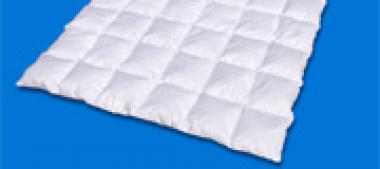Which duvet and pillow should I buy?
For restful sleep it is important to select the right duvet. People have different needs with respect to restful sleep. Some have a predisposition to perspire, others feel cold easily. Some might prefer a voluminous duvet, the so- called ballon or bag duvet, and do not want a flat stitched-through duvet. Hence, it is necessary to find the appropriate duvet and / or pillow.
Both duvets and pillows have two basic characteristic properties that should be considered:
- the filling material
Two main types of fillings are available. Natural fillings such as down and feathers, wool fibres (virgin wool, camel hair, cashmere), cotton and wild silk – and synthetic fibres, e. g. micro fibres, chemical fibres such as hollow fibres and cellulosic fibres are on sale.
- the type / shape
Since people using duvets have different individual needs and purposes (summer and winter duvets) duvets have been developed in a wide variety. Some are made with interior baffle walls. Duvets without interior baffle walls are stitched-through. They are available in a number of different make-ups and appearance. They can be sewn in box-squares, channels or a number of different patterns – like ring-stitch, diamond or diagonal patterns, etc. so that everyone can find the duvet that meets the requirements.











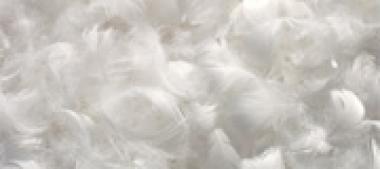

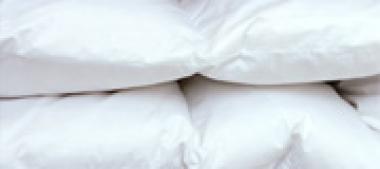


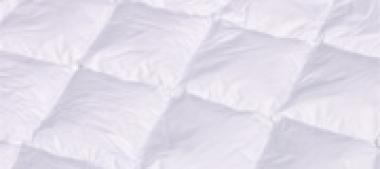

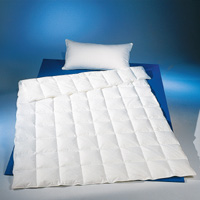 Example of a stitched-through duvet.
Example of a stitched-through duvet.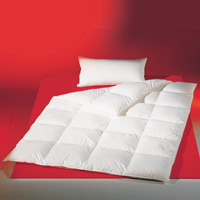
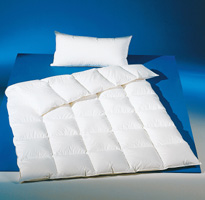

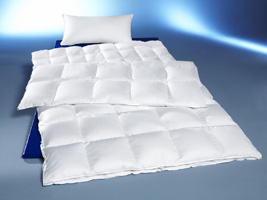 Example of a all-seasons duvet.
Example of a all-seasons duvet.